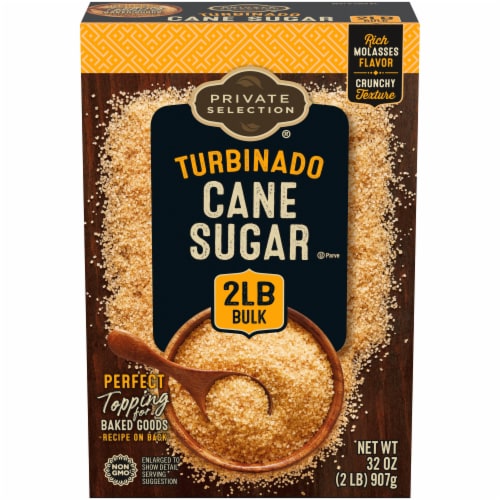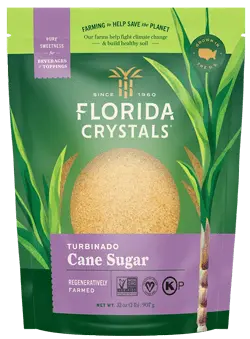Cane Sugar Processing: Typical Techniques and Modern Innovations
Cane Sugar Processing: Typical Techniques and Modern Innovations
Blog Article
Discovering the Comprehensive Tips Associated With Walking Cane Sugar Processing From Collecting to Improvement
The procedure of walking cane sugar manufacturing incorporates a series of complex actions, starting with the cautious harvesting of sugarcane and culminating in the refinement phases that guarantee the end product fulfills industry standards. Each phase, from the extraction of juice to the purification and condensation processes, plays a crucial role in determining the high quality and character of the sugar. Recognizing these stages not just highlights the complexity of sugar production but likewise raises critical concerns concerning effectiveness, sustainability, and technology in the market. What implications do these variables have for future methods?
Collecting Sugarcane
Harvesting sugarcane is an essential action in the walking stick sugar processing chain, as it straight influences the high quality and return of the end product. Appropriate timing and methods are necessary throughout this stage to ensure ideal sugar material and lessen losses. Typically, sugarcane is gathered when it gets to maturation, generally 12 to 18 months after planting, characterized by a high sucrose focus.
:strip_icc()/How-to-Plant-and-Grow-Sugar-Cane-965303384-2fdac181359d44c185dfa7988fc181a8.jpg)
Post-harvest, the sugarcane should be refined quickly to stop sucrose deterioration. Preferably, gathered walking cane must be moved to refining centers within 24 hr to preserve sugar quality. Consequently, reliable logistical preparation is vital to keep the stability of the collected plant throughout the supply chain.
Extraction Process

The smashed cane undergoes a collection of pushing operations to make the most of juice healing. Usually, warm water is splashed onto the smashed walking stick, developing a countercurrent circulation that assists liquify the sugar while likewise assisting in the extraction procedure. The juice gathered from this procedure contains not just sugar however likewise numerous natural substances and pollutants.

To enhance extraction effectiveness, some centers may use diffusion techniques, where the sugarcane is taken in warm water, allowing the soluble sugars to diffuse into the liquid. The resulting juice, rich in sucrose, is then guided to succeeding handling phases, laying the structure for filtration and improvement. The extraction process is hence essential in figuring out the quality and return of the last sugar item.
Filtration Methods
The purification methods employed in walking stick sugar processing are vital for transforming the raw juice into a top notch sugar product. These methods mainly aim to eliminate impurities, such as dirt, plant products, and inorganic compounds, which can adversely impact the end product's taste and color.
Among one of the most common purification methods is information. This procedure entails adding lime and heat to the raw juice, which assists in the coagulation of pollutants. The resulting precipitate is after that gotten rid of via sedimentation or purification, generating a more clear juice. Furthermore, using phosphoric acid can improve the explanation process by more binding impurities.
One more substantial method is carbonatation, where co2 is presented to the made clear juice. This reaction creates calcium carbonate, which records remaining pollutants and advertises their elimination.
Moreover, turned on carbon treatment may be applied to adsorb any staying colorants and organic impurities, ensuring an extra refined item. The combination of these methods efficiently prepares the sugar juice for succeeding steps in the refining process, setting the stage for the production of top notch walking cane sugar.
Crystallization Methods
After the filtration phase, the next vital step in cane sugar processing entails formation methods, which play a pivotal duty in transforming the cleared up juice right into solid sugar. This procedure commonly utilizes two primary techniques: spontaneous condensation and controlled formation.
In spontaneous crystallization, supersaturated sugar options are enabled to cool naturally, leading to the formation of sugar crystals over time. This technique enables for the uniform growth of sugar crystals and higher pureness.
Throughout crystallization, the clarified juice is more helpful hints concentrated via dissipation, increasing its sugar web content until it gets to supersaturation. As soon as this factor is attained, either technique can facilitate the condensation procedure. Cane Sugar Processing. The resultant sugar crystals are then divided from the staying syrup through centrifugation
Eventually, the selection of formation method influences the quality, size, and purity of the final sugar product, making this step necessary in the total cane sugar handling procedure.
Improvement and Product Packaging
Exactly how can the purity and quality of walking cane sugar be better boosted after formation? The improvement procedure plays a crucial duty in achieving high-quality walking cane sugar.
Following, the sugar is subjected to a procedure called centrifugation, where it is rotated at high speeds to separate the purified sugar crystals from the continuing to be liquid. After centrifugation, the sugar is commonly additional refined through a technique called carbonization sites or phosphatation, which makes use of triggered carbon or phosphoric acid to get rid of shade and off-flavors.
Once refined, the sugar is dried to attain the wanted wetness web content, making certain that it remains steady during storage space and transportation. The final action involves packaging the refined sugar in airtight and moisture-proof containers to maintain its top quality and protect against contamination. Cane Sugar Processing. Proper product packaging not just extends life span but also assists in simple handling and distribution, ensuring that customers get sugar that meets the highest requirements of pureness and top quality
Conclusion
The comprehensive steps associated with cane sugar handling, from the thorough harvesting of sugarcane to the elaborate refinement and product packaging stages, highlight the value of each stage in guaranteeing top quality sugar production. Optimum harvesting methods, reliable removal approaches, and rigorous purification procedures jointly add to the final product's purity and security. The formation and succeeding packaging practices additionally enhance the stability and shelf life of the sugar, highlighting the intricacy and accuracy inherent in this necessary agricultural sector.
The process of walking cane sugar manufacturing includes a collection of detailed actions, starting with the careful harvesting of sugarcane and finishing in the refinement phases that guarantee the last product meets sector requirements. Preferably, harvested cane ought to be transferred to refining centers within 24 hours to maintain sugar high quality.In spontaneous formation, supersaturated sugar remedies are permitted to cool down normally, leading to the development of sugar crystals over time - Cane Sugar Processing. The refinement procedure plays a critical role in achieving top quality walking cane sugar.The thorough actions involved in cane sugar processing, from the precise harvesting of sugarcane to the elaborate refinement and product packaging stages, highlight the why not try here importance of each stage in making certain top quality sugar manufacturing
Report this page